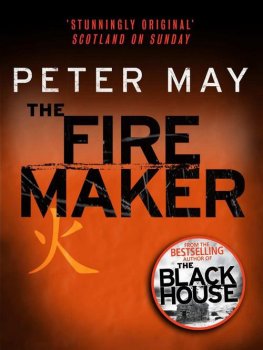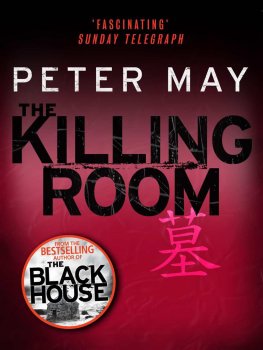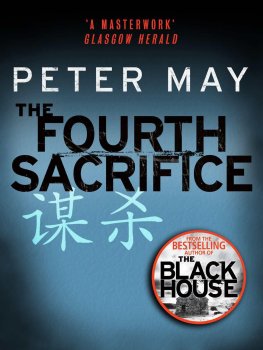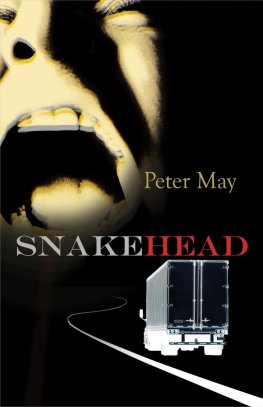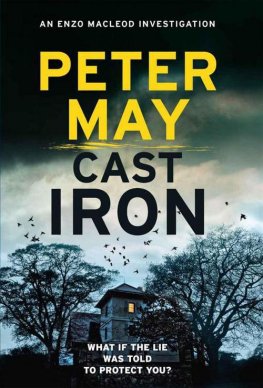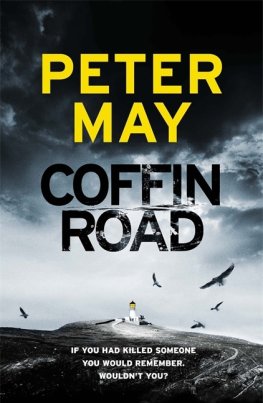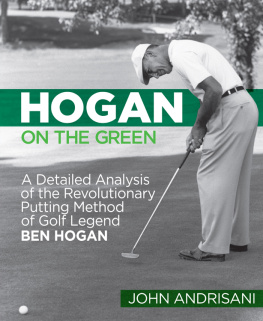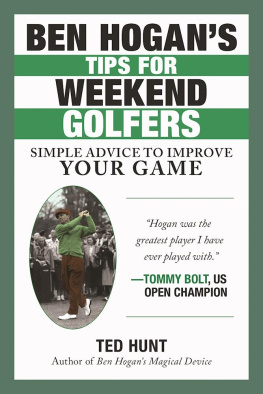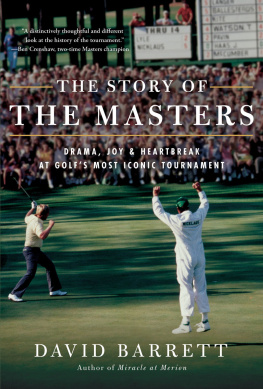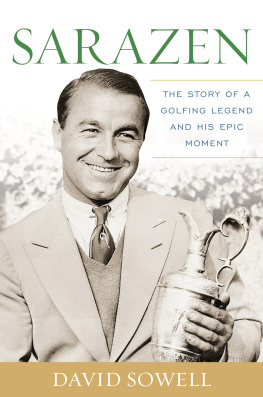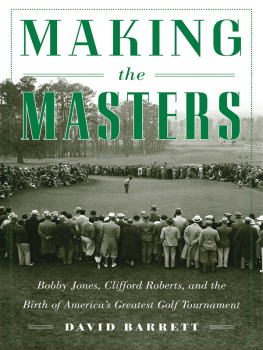I n June 2017, Justin Thomas was en route to what could have been the lowest-scoring round in the history of the US Open. He ended up with a 63, which matched the lowest-scoring round in the long history of the tournament. Watching it, celebrated writer Dan Jenkins tweeted, Nine-under 63 by Justin Thomas. Hogan shot a 10-under 62 in the 1943 [sic] National Open. The USGA doesnt count it, but I do and Hogan did.
I wondered what on earth he was referring to. I did some research and discovered the 1942 Hale America Tournament, of which I was unaware. With the help of Dans daughter, Washington Post columnist Sally Jenkins, I connected with Dan via email. We went back and forth a few times, and I became determined to tell this story. So the first and foremost acknowledgment goes to the late Mr. Jenkins. This book would never have happened had I not read that tweet.
There are also many golf historians, librarians, archivists, and ardent fans and collectors to thank for making this project come to life. Tara Valente and Victoria Nenno at the USGA couldnt have been more helpful. Thanks to them, I now know what Dropbox is! Travis Puterbaugh at the World Golf Hall of Fame provided much-appreciated assistance, as did Nathan Myers at Augusta National. Kathy Shoemaker and Courtney Chartier at Emory University guided me through the Emory archives and even saved some digital prints that had expired. Nancy Rasmussen, the woman who runs the reunions for the 90th Infantry Division, was invaluable in getting me in touch with the division historians. Michelle Kopfer at the Eisenhower Presidential Library provided me with the correspondence between the 34th president and Bobby Jones. Golf historians Tony Parker and Jeff Martin also provided valuable insights. Michelle Press at Getty Images helped me navigate the intimidating world of licensed photography. Sam Smith was there, as always.
It helps me to acknowledge the many others who assisted with this book by breaking this down by the four main characters.
BEN HOGAN
Hogan collector John Seidenstein was instrumental to the entire project, giving me access to his trove of Hogan memorabilia and offering to read parts of the manuscript. He has forgotten more about Hogan than Ill ever know. Similarly, Mark Baron also was quite helpful, particularly with Hogans war records. They were otherwise unobtainable. Hogan expert Martin Davis offered his considerable advice. Karen Wright of the Ben Hogan Museum provided stories about the man and his legacy. Jody Vasquez helped me with introductions at the Colonial Country Club as well as providing background on his days as a Hogan ball shagger. Dow Finsterwald Jr., the head pro at Colonial, personally guided me through the Ben Hogan Room and the replica of Hogans office. Jon Kane, the general manager of Ridgemoor Country Club, took time to give me a ride around the course while showing me a number of Hogan photographs from the Hale America Tournament that adorn the clubhouse. He also provided me with a book on Ridgemoors history, which had more detail on the Hale America than any other book I have come across.
BOBBY JONES
It goes without saying that any research or history involving Bobby Jones starts and ends with the great Sidney Matthew. He could not have been more helpful, and made numerous suggestions that I hope will illuminate this part of Joness remarkable life. My thanks to Catherine Lewis as well. She, too, is a fountain of Jones information as well as an excellent proofreader. Jake Brusch at Emory provided an entre to the invaluable Ms. Lewis, and the redoubtable Hank Klibanoff introduced me to Jake. Klibanoff, a former Boston Globe colleague, is a professor at Emory. I also want to thank Bob Jones IV for his thoughts during a number of interviews. Stephen Lowe was a huge help in allowing me to read Joness war records and correspondences from Joness time in Europe. Steve Reid also was incredibly helpful in piecing together Joness 1944 visit to Royal Lytham and his correspondence with the club about his famous shot out of the bunker of the 71st hole of the 1926 British Open.
LLOYD MANGRUM
In trying to get to the bottom of Lloyd Mangrums war years, the indefatigable Norm Richards was indispensable. As the 90th Divisions association assistant historian, Richards was able to navigate the Office of Military Personnel Records in St. Louis on my behalf to try and set the Mangrum record straight. He went to enormous lengths to find and copy all the Morning Reports, which enabled me to piece together where Mangrum was and when he was there. A lot is still unknown but, thanks to Norm, a lot more is now known. Mangrums granddaughter Jean Schuessler also was helpful in tracking down various pieces of her grandfathers war years. David Barrett and Guy Yocum provided assistance on Mangrums background. No one has ever written a real biography of this man. He is worth it.
JIMMY DEMARET
Of all the characters in this book, Demaret is the one Id like to have a beer with, just to listen to his stories. The Office of Military Personnel Records was able to provide documents from Demarets days in the US Navy. Unlike US Army files, many of which were destroyed in a 1973 fire, the Navy files remained largely undamaged. Demaret himself provided much of the personal information here thanks to his book, My Partner, Ben Hogan. To call the man self-effacing would be an understatement. Todd Robbins at Wee Burn Country Club provided information on Demarets time there. Greg Hansen of the Arizona Daily Star provided the background on Demarets memorable 14 during the 1952 Tucson Open.
Thanks also to the people who really made this book possible: my literary agent, Colleen Mohyde, and Christen Karniski, Erinn Slanina, Lara Hahn, and Veronica Jurgena from Rowman & Littlefield. Laura Hibbler, Chloe Gerson, and Dzintra Lacis at Brandeis University helped me re-enter the old world of reading microfilm rolls. Friends and family keep you grounded and level-headed in times like these; my thanks to my children, Tim, Patrick, and Katie; my brothers, Todd and Andy; and my sister, Ellie. Tom and Kathi Mullin and Doug and Sue Noyes provided wine, laughs, and support. And as is true in all phases of life, my thanks to Eileen McNamara for her counsel, advice, and support throughout a pandemic, self-quarantine, cancer surgery, the death of two beloved dogs, the arrival of a new (and exhausting) dog, the discovery of A French Village, and many months of Zoom, sweat pants, stretch pants, quitters, and non collared, loose-fitting T-shirts. How did that happen?
BOOKS
Atkinson, Rick. The Guns at Last Light. New York: Henry Holt, 2013.
Barkow, Al. Gettin to the Dance Floor: An Oral History of American Golf. New York: Atheneum, 1986.
Barrett, David. Miracle at Merion: The Inspiring Story of Ben Hogans Amazing Comeback and Victory at the 1950 U.S. Open. New York: Skyhorse, 2010.
Barrett, David. The Story of the Masters: Drama, Joy and Heartbreak at Golfs Most Iconic Tournament. Croton-on-Hudson, NY: Tatra Press, 2021.
Companiotte, John. Jimmy Demaret, The Swings the Thing. Ann Arbor, MI: Clock Tower, 2004.
Concannon, Dale. Bullets, Bombs and Birdies: Golf in the Time of War. Ann Arbor: Clock Tower, 2003.
Cronin, Tim. Reflections on Ridgemoor. Chicago: Ridgemoor Country Club, 2005.
Darsie, Darsie L. My Greatest Day in Golf. New York: A. S. Barnes, 1950.
Davis, Martin. Ben Hogan, The Man behind the Mystique. Greenwich, CT: American Golfer, 2002.
Demaret, Jimmy. My Partner, Ben Hogan. London: Peter Davis, 1954.
Dodson, James. Ben Hogan, An American Life. New York: Broadway, 2004.


